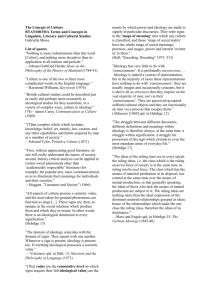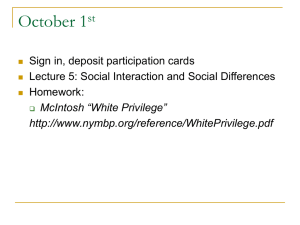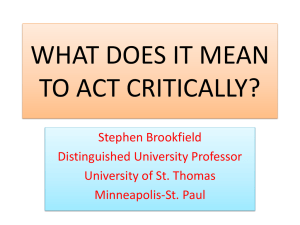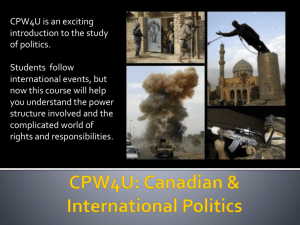ideology critique paper prompt
advertisement
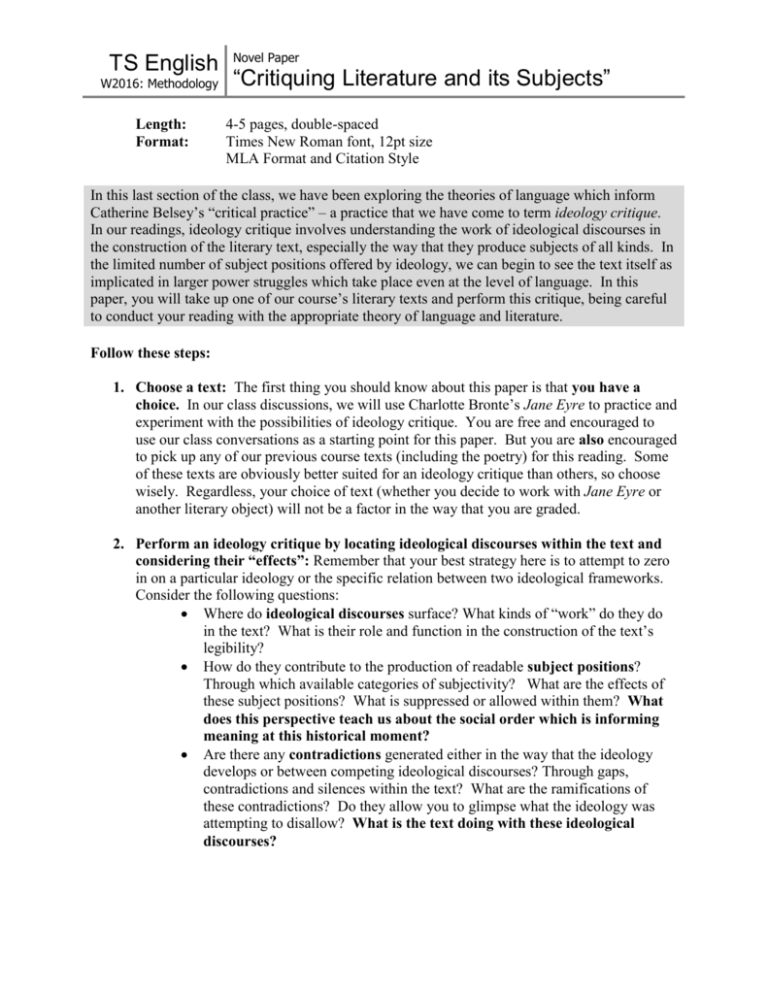
TS English W2016: Methodology Length: Format: Novel Paper “Critiquing Literature and its Subjects” 4-5 pages, double-spaced Times New Roman font, 12pt size MLA Format and Citation Style In this last section of the class, we have been exploring the theories of language which inform Catherine Belsey’s “critical practice” – a practice that we have come to term ideology critique. In our readings, ideology critique involves understanding the work of ideological discourses in the construction of the literary text, especially the way that they produce subjects of all kinds. In the limited number of subject positions offered by ideology, we can begin to see the text itself as implicated in larger power struggles which take place even at the level of language. In this paper, you will take up one of our course’s literary texts and perform this critique, being careful to conduct your reading with the appropriate theory of language and literature. Follow these steps: 1. Choose a text: The first thing you should know about this paper is that you have a choice. In our class discussions, we will use Charlotte Bronte’s Jane Eyre to practice and experiment with the possibilities of ideology critique. You are free and encouraged to use our class conversations as a starting point for this paper. But you are also encouraged to pick up any of our previous course texts (including the poetry) for this reading. Some of these texts are obviously better suited for an ideology critique than others, so choose wisely. Regardless, your choice of text (whether you decide to work with Jane Eyre or another literary object) will not be a factor in the way that you are graded. 2. Perform an ideology critique by locating ideological discourses within the text and considering their “effects”: Remember that your best strategy here is to attempt to zero in on a particular ideology or the specific relation between two ideological frameworks. Consider the following questions: Where do ideological discourses surface? What kinds of “work” do they do in the text? What is their role and function in the construction of the text’s legibility? How do they contribute to the production of readable subject positions? Through which available categories of subjectivity? What are the effects of these subject positions? What is suppressed or allowed within them? What does this perspective teach us about the social order which is informing meaning at this historical moment? Are there any contradictions generated either in the way that the ideology develops or between competing ideological discourses? Through gaps, contradictions and silences within the text? What are the ramifications of these contradictions? Do they allow you to glimpse what the ideology was attempting to disallow? What is the text doing with these ideological discourses? TS English W2016: Methodology Novel Paper “Critiquing Literature and its Subjects” 3. Make a claim about how the given ideological discourse works in and throughout the text: One way to make this claim is to examine how and in what ways the text is constructed, limited, and contained by the categories and ideas prescribed by ideology. These types of claims will generally focus on how the text produces subjects who are confined to particular categories of identity. These categories themselves are often fairly complicated and one of the things that you can do with an ideology critique is to locate all of the complicated ways that this identity is “naturalized” in the service of a particular set of historical/material circumstances. Another type of claim can be made by focusing on the contradictions or omissions which the text produces in its mobilization of ideology. It is often within these crises of meaning that the possibility of thinking a different ideology and a different set of subject positions is made available. In this sense, it is possible to see the text as critiquing the ideologies that are inherent to its construction and legibility. What does this text teach us about the limits and problems of ideology? What does it imagine as alternatives? What other possibilities are glimpsed at the frayed edges of the established symbolic system? Either way, keep one thing in mind: when you produce a claim using ideology critique, you are making a claim, not about the literary text itself, but about the signifying order that produced it and makes it legible. This is not to say that you can’t see the text as working subtly against that symbolic order. But either way, your claim will be about what the text teaches us about the ideologies that were in play at its specific historical moment.

